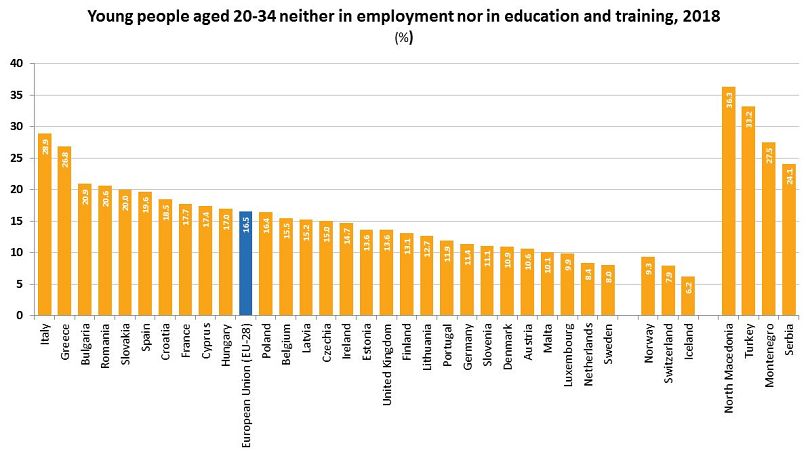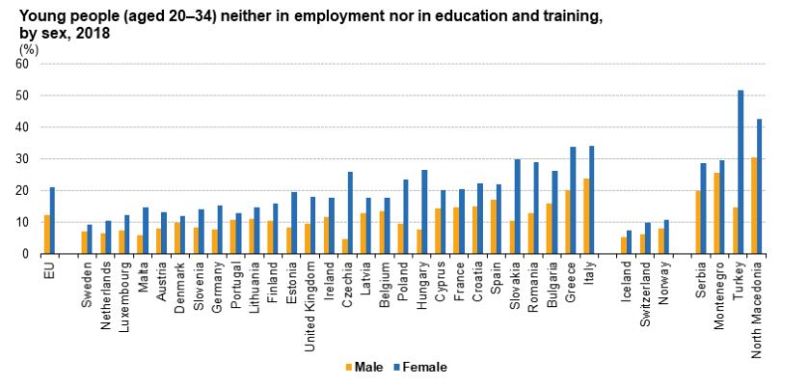According to recent data from Eurostat, nearly 9% more young men have jobs or are in education than women on the continent.
Around one in six young people aged 20-34 were neither in employment nor education in the European Union in 2018, according to recent data by Eurostat.
This represented a marginal drop of 0.7% compared to the previous year.
'Considerable difference' between women and men
There was a "considerable difference" in the "neither employed nor in education" (NEET) rate between young men and young women across the bloc.
Nearly 9% more young men were in work or employment than women in the EU28 countries. The NEET rate for women aged between 20-34 was 20.9%, compared to 12.2% for men in the same age bracket.
One of the biggest differences between the sexes was seen in Turkey where 14.8% of young men were NEETs versus 51.5% of young women.
Italy also recorded a large disparity, with 23.8% of young men neither employed nor in education, compared to 34.32% of women.
In the UK, 9.4% of men in the 20-34 age group did not have a job nor were they studying, while nearly double the number of women (18%) were NEETs.
However, the contrast between sexes is nothing new. Records from the year 2000 onwards show a similar disparity.
The European Parliament Committee said last year that women aged between 25-29 were most likely to be unemployed due to the after-effects of the financial crisis.
It said young people have been "disproportionately affected by job losses during the crisis because they are more often employed under temporary contracts".
It also said young women are likely to be more affected by the long-term consequences of the crisis due to "fiscal consolidation and welfare cuts".
Which EU members had the highest level of young NEETS?
In Western Europe, Italy recorded the highest level of young NEETs, with more than a quarter of young people (28.9%) neither in employment nor education.
Greece followed in second place with 28.9%, while Spain recorded NEET levels for 20 to 34-year olds at 19.6%.
Earlier this year, the IMF chief Christine Lagarde warned that Spain, Italy, Portugal, and Greece should fight their youth unemployment rates with structural reforms, which included less bureaucracy for business and investment in innovation.
In Eastern Europe, Bulgaria came in third place with 20.9% and Romania followed behind with 20%.
Other non-EU members, North Macedonia and Turkey, topped the overall report with over 33% of 20 to 34-year-olds neither employed nor in education.
Which EU members had the lowest level of young NEETS?
In Sweden, just 8% of 20 to 34-year-olds were neither in employment nor education, which was the lowest level recorded of any EU member state.
It was closely followed by the Netherlands (8.4%) and Luxembourg (9.9%). Austria and Malta also had similarly low levels, with just over 10%.
Iceland, which is not an EU member state, recorded the overall lowest level of just over 6%.


